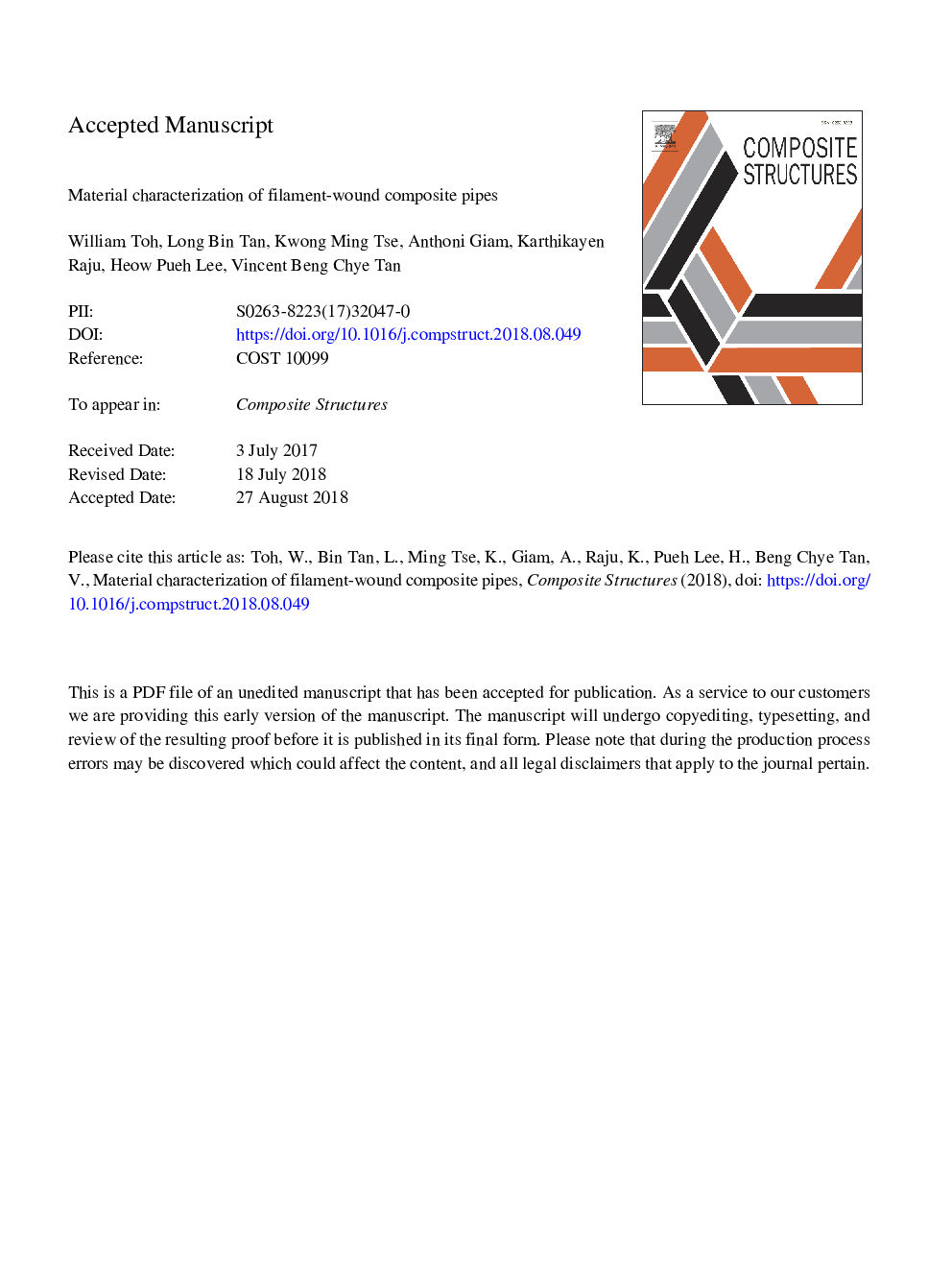| Article ID | Journal | Published Year | Pages | File Type |
|---|---|---|---|---|
| 10131600 | Composite Structures | 2018 | 34 Pages |
Abstract
In obtaining mechanical properties of filament-wound fibre reinforced plastic pipes, standardized tests are often used to obtain bulk properties. Being a laminated composite, individual layers of the lamina will behave differently and therefore pipe-level characterizations are usually unable to fully describe the localised responses in detail. Unlike flat composite layups, obtaining unidirectional ply properties in cylindrical filament-wound composites is not as straight-forward. In this work, the composite pipe stress homogenization theory was applied in reverse to obtain the corresponding ply properties in the filament-wound pipe through successive iterations towards experimentally obtained bulk properties. Initial estimates of ply properties were obtained through a combination of extensive literature search and applications of micromechanics theories. With the iterated ply properties, finite element models simulating the tests used to obtain bulk properties were performed to validate the accuracy of the material properties. In addition, additional validation was performed on a smaller pipe section to evaluate the scalability of using ply properties across pipes of different dimensions. It was found that the ply properties obtained was able to accurately predict the responses for pipes of various dimensions.
Keywords
Related Topics
Physical Sciences and Engineering
Engineering
Civil and Structural Engineering
Authors
William Toh, Long Bin Tan, Kwong Ming Tse, Anthoni Giam, Karthikayen Raju, Heow Pueh Lee, Vincent Beng Chye Tan,
